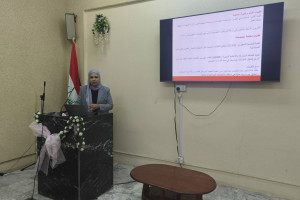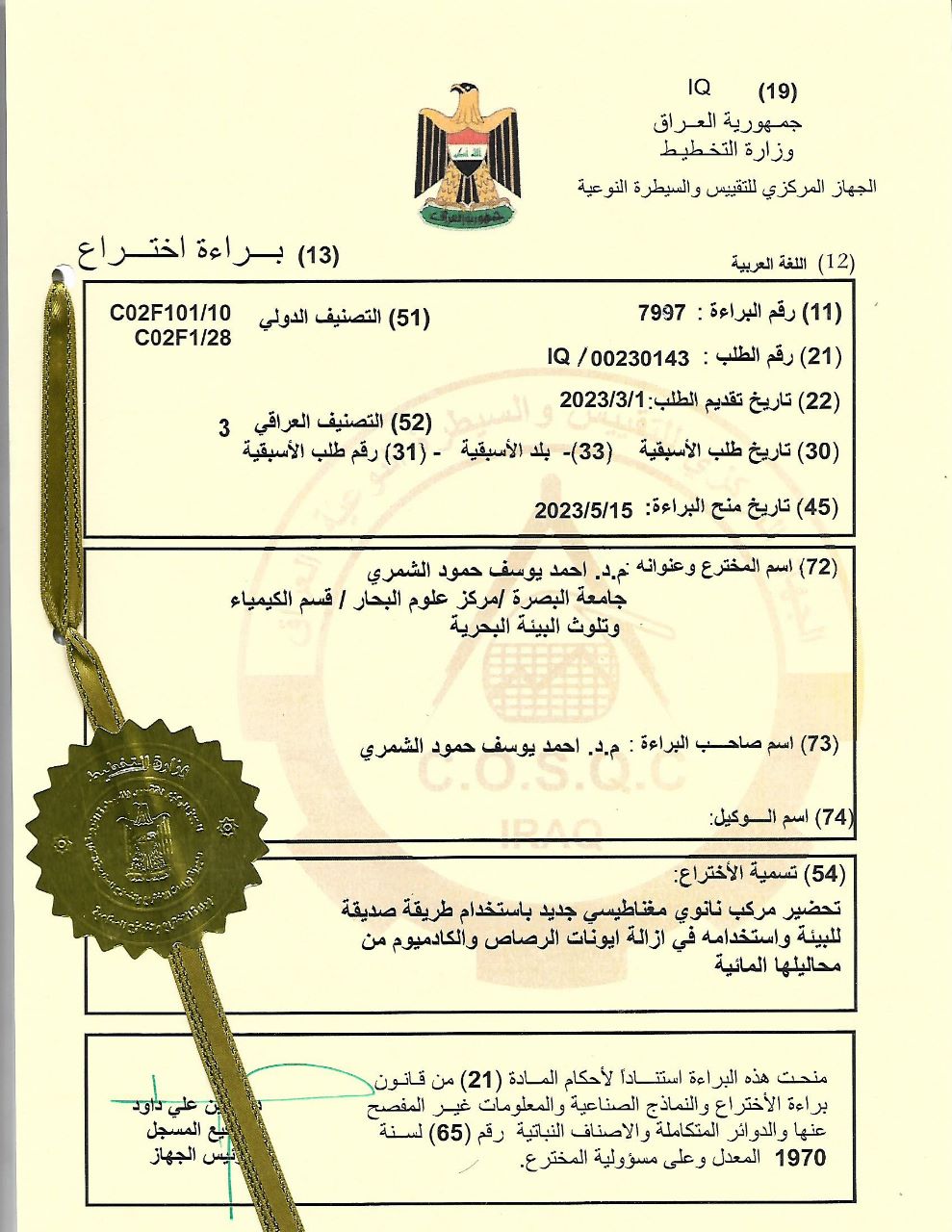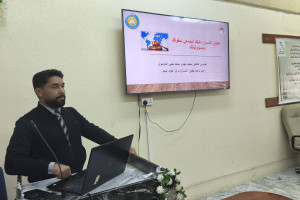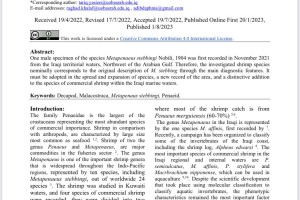

Dr. Ahmed Yousef Hammoud Al-Shammari, a lecturer in the Department of Chemistry and Marine Environment Pollution - Marine Science Center - University of Basra, obtained a patent issued by the Central Agency for Standardization and Quality Control in the Ministry of Planning to enable them to prepare a new magnetic nanocomposite using an environmentally friendly method and use it to remove lead and cadmium ions from their aqueous solutions.
The patent included the preparation of a new magnetic nano-spin ferrite compound with the formula Co0.33Cr0.33Ni0.33Fe2O4 by the sol-gel method of spontaneous combustion using elemental salts and lemon juice extract. This method is within green chemistry and is an environmentally friendly method with low cost compared to other methods. The prepared nanocomposite using several techniques, namely infrared radiation (FTIR), X-ray diffraction (XRD), scanning electron microscope with optical emission field (FESEM), and energy dispersive X-rays (EDX). The use of the prepared nanocomposite as an adsorbent surface in the process of adsorption of lead and cadmium ions from their aqueous solutions. Some of the factors affecting the adsorption process were measured, which are the equilibrium time and the pH function. The effect of the difference in the initial concentration of lead and cadmium ions on the adsorption percentage was also studied. A study was also conducted for the possibility of reusing the prepared adsorbent surface in this study again, where the results of the activation process showed that the recovery percentage is very high in the first and second activation process for the test samples, and this indicates that the prepared adsorbent surface can be reused several times while retaining its ability to Adsorption of the studied pollutants, and the practical application was also carried out, using the prepared surface, to remove lead and cadmium ions from marine water samples from two sites: the first site, Al-Faw Al-Kabir port (East breaker) and the second site, Khor Al-Zubair oil port (berth 13), where the percentage of ion removal was Lead and cadmium are very high, which indicates the possibility of using this surface to remove lead and cadmium ions from solutions contaminated with it.





.jpg)

.png)